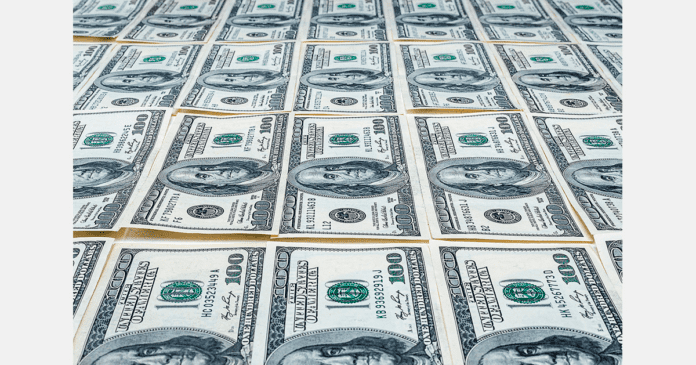The U.S. dollar is currently experiencing a decline against major currencies, reaching a six-month low against the euro. This shift in the currency market is largely attributed to the recent tariffs imposed by U.S. President Donald Trump on global trade, prompting investors to reassess the implications on economic growth. The announcement of tariffs has had a significant impact on global markets, leading to a reduction in global stocks and a flight to safer assets such as bonds and gold. There are growing concerns about the potential for a trade dispute to trigger a global economic slowdown and inflation.
President Trump’s announcement of a 10% baseline tariff on all U.S. imports, with higher duties on major trading partners, has raised alarm bells among market analysts. Adam Button, chief currency analyst at ForexLive, noted that the FX market is signaling a potential slowdown in U.S. growth and a breakdown in global trade systems. The reaction to the tariffs has been a sell-off of the dollar, as investors unwind crowded trades in response to the uncertainty surrounding trade policies.
Despite weaker-than-expected data from the Institute for Supply Management (ISM) indicating a slowdown in the U.S. services sector, the dollar has shown minimal response. This adds to existing concerns from consumer and business surveys, consumer spending, and inflation reports, fueling fears of stagflation. However, the decrease in new unemployment claims suggests stability in the labor market. Investors are eagerly awaiting the non-farm payrolls report for further insights into the labor market and potential changes in Federal Reserve interest rate policy.
The recent turmoil in the currency markets has also spilled over into Wall Street, with the main indexes experiencing their largest one-day percentage losses since 2020. Investors are closely monitoring Fed Chairman Jerome Powell’s upcoming speech, as a more hawkish tone could introduce additional risks to the market. The uncertainty surrounding inflation and potential rate cuts has the potential to create further volatility in the markets.
In the midst of these developments, the euro has surged to a six-month high, climbing 1.74% to $1.1037, its largest intraday gain since November 2022. The dollar has also weakened against other major currencies, falling 1.95% against the Japanese yen to 146.445 yen and dropping 2.35% against the Swiss franc to 0.8608 franc. Both the yen and franc are at their strongest levels against the dollar in six months, while the British pound has also strengthened by 0.66% to $1.3093.
Deutsche Bank has issued a warning about a potential crisis of confidence in the U.S. dollar, cautioning that shifts in capital flow allocations could override currency fundamentals and lead to disorderly currency movements.
In conclusion, the recent tariffs imposed by President Trump have had a significant impact on global markets and currency movements. Investors are closely monitoring economic data and central bank policies for further insights into the potential trajectory of the markets. The evolving situation requires careful analysis and risk management to navigate the challenging landscape of the global economy.




